
Words by Marcus Jaye
Photography © Museum of London; Alessio Checconi; Apollo Galleries
When a 3000-year-old Bronze Age toddler’s shoe appeared on the foreshore of a north Kent river in September 2022 it could have easily been ignored or dismissed as a rusty piece of detritus. For archaeologist, Steve Tomlinson it was the mudlarking – the act of searching the riverbed for historical treasures – discovery of a lifetime. The 15cm leather shoe is thought to be the oldest found in the UK and dates from between 888 and 781BC.
Finding these humble and everyday human connections, made from a tactile material we are all so familiar with, makes any archaeological leather finds remarkable. Leather is a great leveller and was used and worn by everybody throughout history. From shoes to wristbands, to even bikinis, historical leather is a direct link to the people of the past and, excitingly, important finds continue to be made.
“Anything that pre-dates the Romans is very, very unusual.” says Angela Middleton, Senior Archaeological Conservator, Historic England & Committee Member of the Archaeological Leather Group. “I think people are fascinated by the survival of ephemeral materials. They often are materials/objects we can relate to, such as shoes or belt or knife scabbard. So we can immediately recognise, understand and connect with them. Especially items of clothing offer a human connection, as the creases in a shoe remind us of its use and the wearer,” she says.
Historical leather differs according to the manufacturing process, but establishing the exact tanning and processing technique is difficult says Middleton. For a rough guide: rawhide (prehistory onwards), leather (Roman period onwards), pseudo leather (prehistory onwards), vegetable tanned leather (Roman period onwards), alum tawed leather (Medieval onwards), cured leather (prehistory onwards), oil tanned leather (prehistory onwards) and chrome tanned leather (1850 onwards).
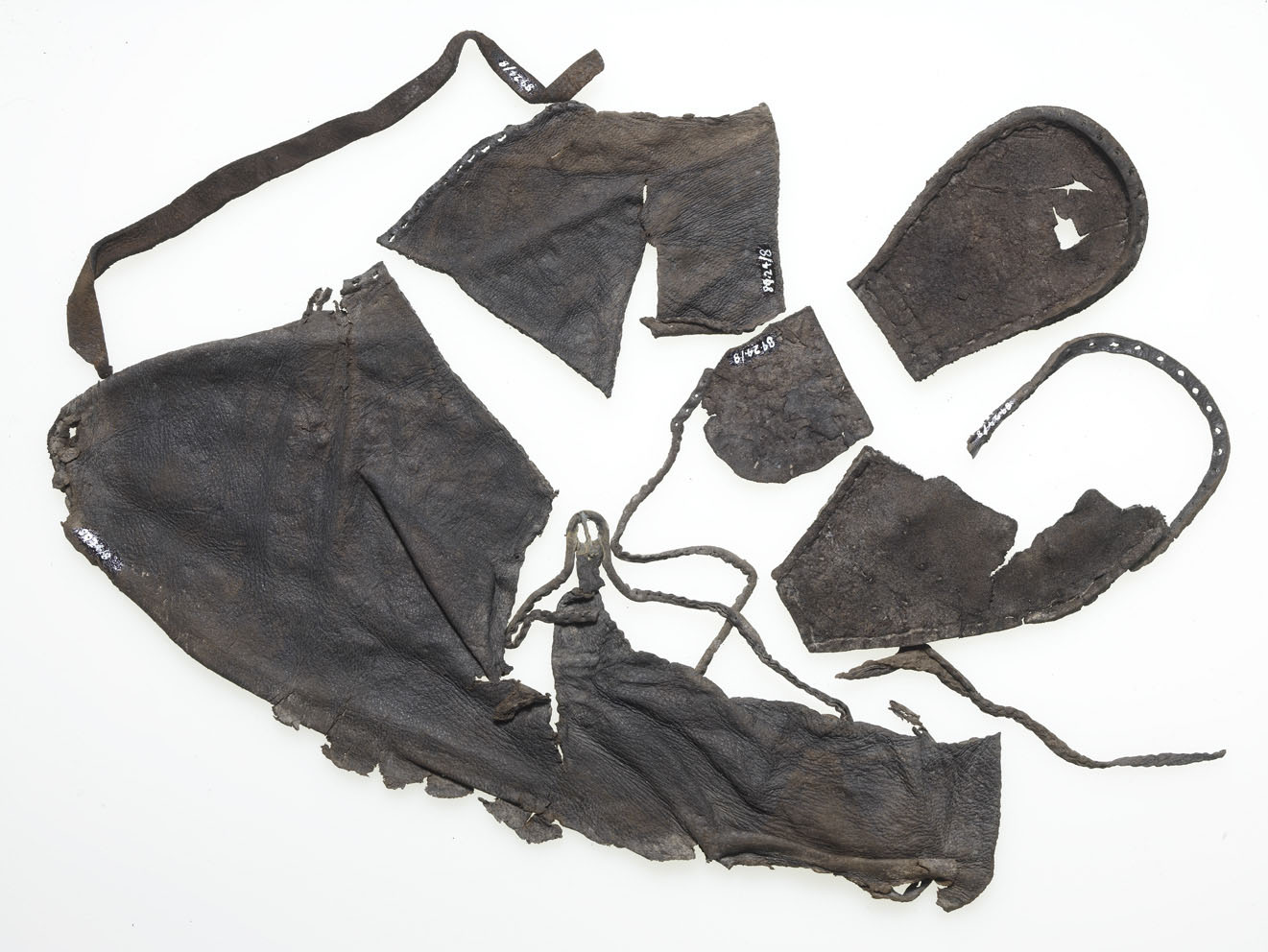 Fragments from a Late Medieval leather shoe. © The Museum of London
Fragments from a Late Medieval leather shoe. © The Museum of London
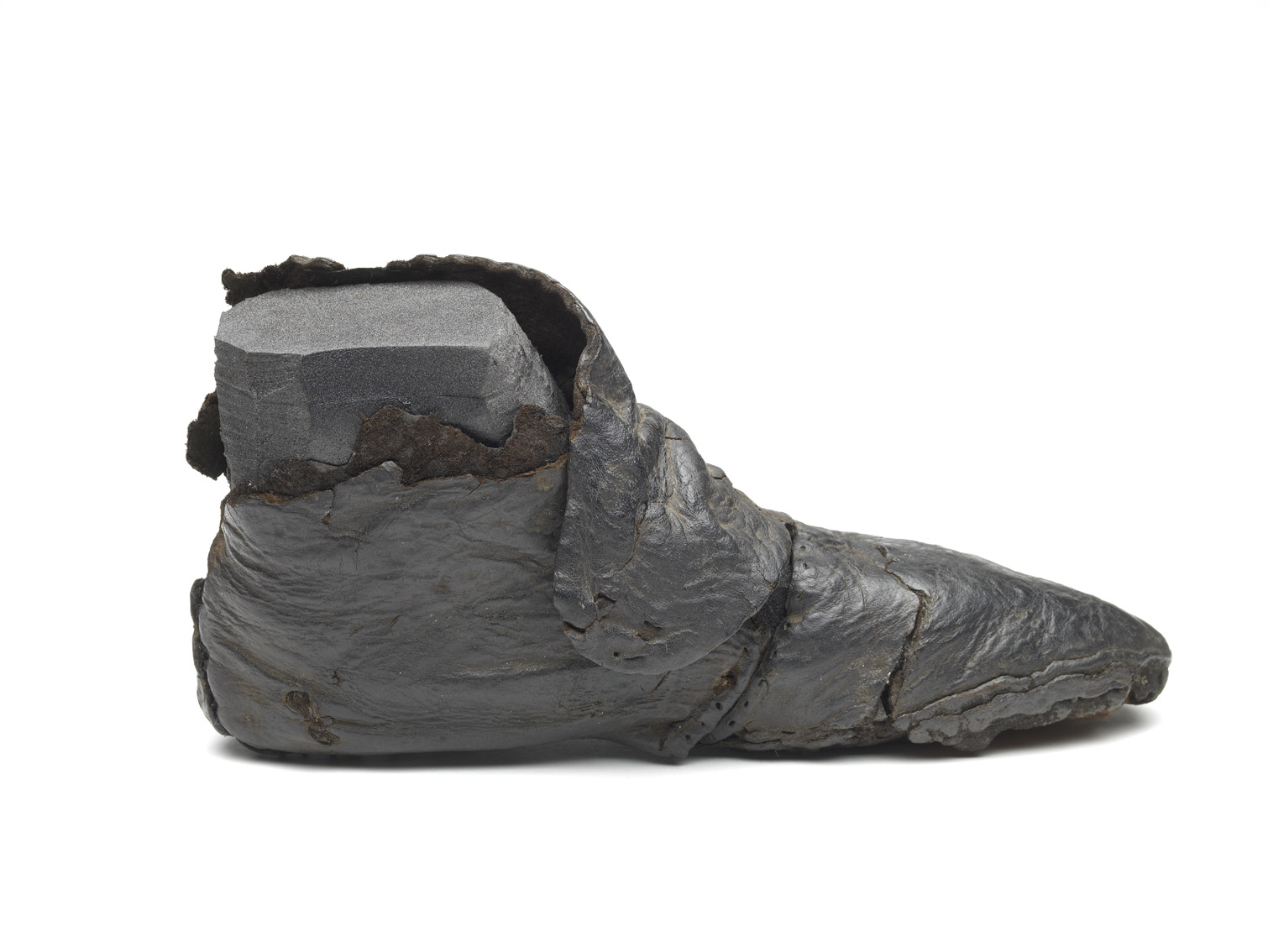 Saxo-Norman; 10th-early 11th century shoe. © The Museum of London
Saxo-Norman; 10th-early 11th century shoe. © The Museum of London
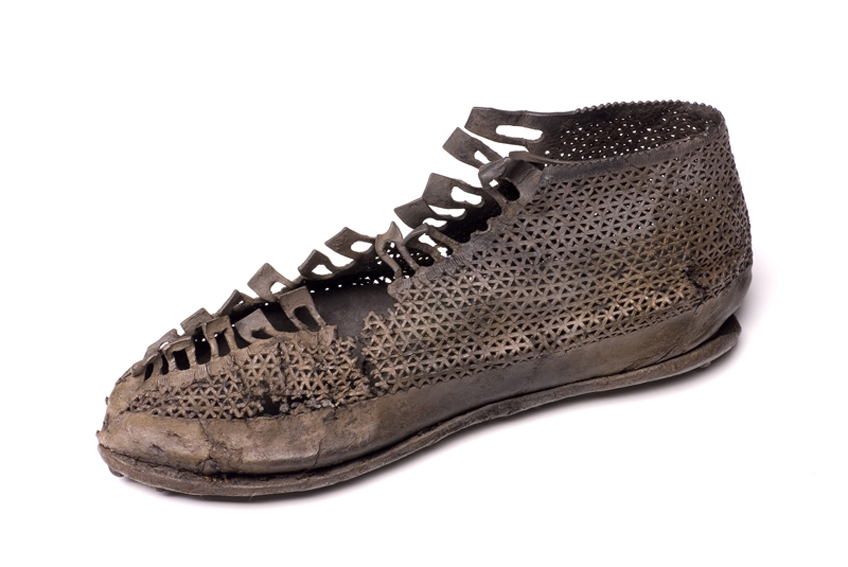 Roman leather shoe. © The Museum of London
Roman leather shoe. © The Museum of London
Exact ‘dating’ of historical leather can be determined with a technique called Carbon C14. This technique is destructive, needing a small sample of the leather to be cut to measure the level of carbon 14. When the animal was alive, it accumulated C14 through its diet. Once it dies, C14 accumulation stops. Then C14 decays at a steady rate. By measuring how much C14 is left in the leather you can establish the year of death and then work out how old it is.
“Most of the leather that survives in archaeological deposits in London is waterlogged, and has usually been in deposits that do not have a lot of oxygen or bacterial activity.” says Jannicke Langfeldt, Conservation Manager Objects, Museum of London. “Thames mud deposits are great for leather preservation and we have a lot of shoes surviving in the archaeological record. There’s a lot less clothing and belts.” she says.
Langfeldt says when leather is excavated from these conditions it must be kept wet, often in the fridge, to keep microbial growth down. It is washed in water with soft brushes, and, when the leather is clean, gradually, the water is replaced with a synthetic material like Glycerol or Poly-Ethylene Glycol filling the voids in the leather and preventing it from shrinking and going brittle when drying. The water is removed from the leather by freeze-drying.
“Very little Roman leather clothing survives, but we have four leather bikinis from Roman deposits.” says Langfeldt with regards to the Museum of London’s collection of leather items.
“Personally, I’m always surprised at how many shoes (in particular soles) survive in archaeology, and also think it’s funny how very rare it is to find a pair!”
One item which recently went to the Museum of London for restoration was a well-preserved archer’s leather wrist guard thought to date back to Tudor times and similar to examples found on the Mary Rose which sank in 1545. It was found – while mudlarking on the Thames foreshore – by Alessio Checconi, @london_madlark, who has over 108K followers on Instagram.
Checconi started his hobby at the beginning of lockdown. “I live next to the river at Vauxhall.” he says. “The most accessible area is around Lambeth Bridge on the parliament side.” says Checconi. “Anywhere from Greenwich to Putney is all a good area because it has been inhabited since neolithic times.”
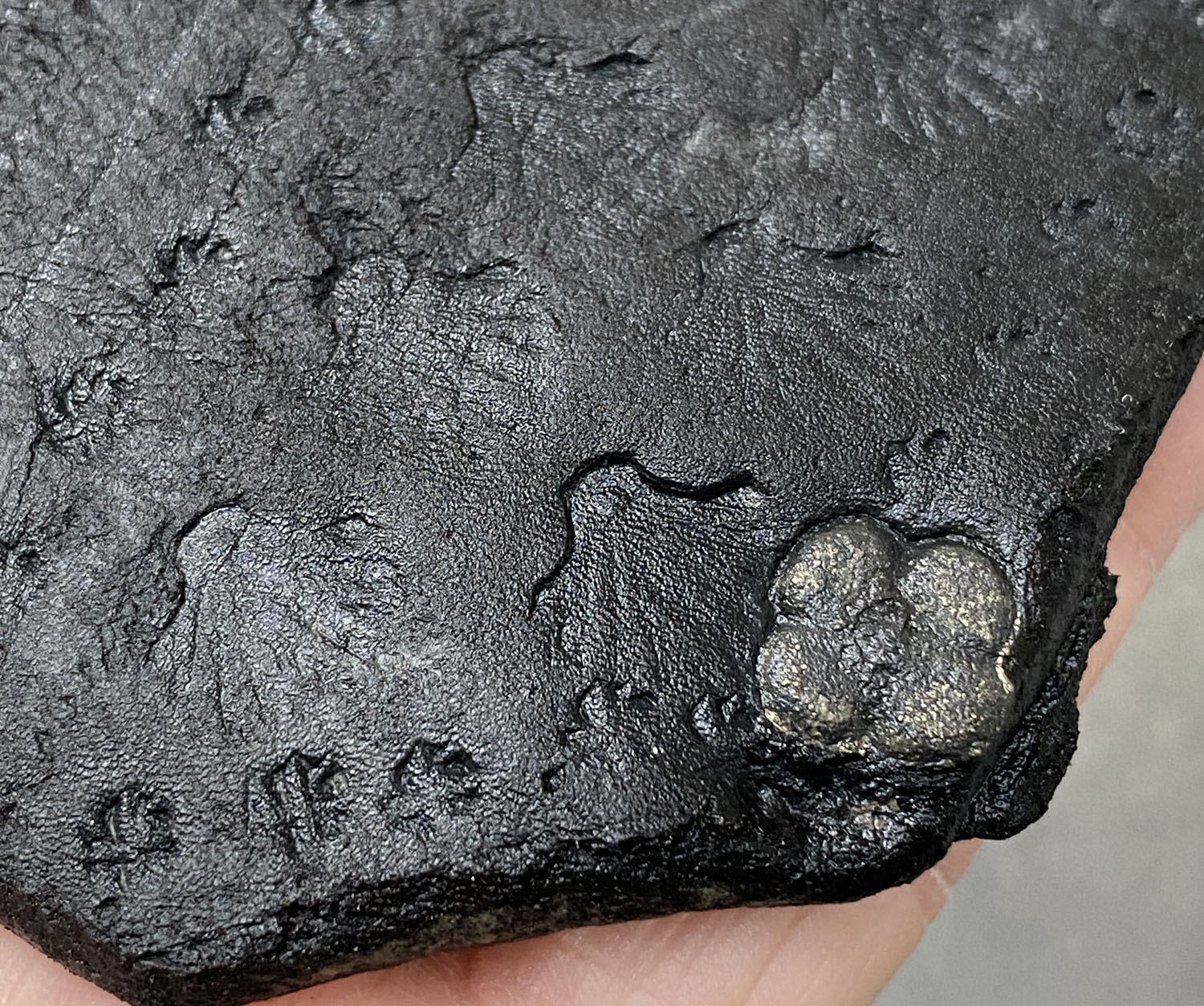 Tudor archer's leather wristband. © Alessio Checconi
Tudor archer's leather wristband. © Alessio Checconi
People are required to have a permit from the Port of London Authority in order to mudlark on the Thames. The pastime has seen such an explosion in popularity during the pandemic, thanks to social media, 500 permits have risen tenfold to an incredible high of 5,000. So much so, that the authority has had to cap the number and isn’t currently issuing anymore. Charities such as the Thames Explorer Trust offer organised one day mudlarking tours for anybody interested in experiencing it for themselves.
Checconi says there are objects made of leather nearly every time he goes. “Many people don’t want to recover leather or just don’t see it.” he says. “They look like little bits of wood.”
The Thames is particularly rich for mudlarkers because of its seven-metre tidal range, and, in particular, during spring tides and the extremely low tides that happen every couple of years.
Checconi says it is extremely hard to date the leather unless using carbon dating but you can look at the shapes or decorations as a diagnostic tool, and the reason his Tudor wristband, thanks to its decorations in the shape of flowers, was identified.
He has developed an eye for leather and the oldest thing he has found is a fragment of a Roman shoe. “I believe it’s Roman because of the hob nails popping out – the Victorians started using those too, but I found it in an area that is more strictly Roman,” he says.
Anything thought to be special is sent directly to the Museum of London. “We email on the spot and put it in sealed plastic bag and in the fridge.” says Checconi. If it is something of interest, the museum can start the preservation process.
For less rare finds, Checconi puts them in his toilet cistern for a month and a half where they are constantly rinsed and kept wet. The leather is very dark/black at this point and still has anoxic mud and minerals inside. “If dried, it becomes hard as a rock because of the minerals inside.” he says.
The item is put in water for six to seven weeks and after this stage the leather can be dried.
Checconi adds leather oil or oil for untreated leather to preserve the elasticity. It is left to soak for three additional weeks in this and then dried slowly in a dark place. Only institutions are able to afford the expensive machines used to dry freeze artefacts he notes.
“We are perennial custodians. We can’t sell them or make money out of it.” says Checconi. “England has trust that things aren’t sold,” he adds.
The museum checks in with the mudlarkers every six months and they select a handful of items to record on the Portable Antiquities Scheme (PAS), managed by the British Museum to record archaeological finds discovered by the public.
Checconi has a wonder cabinet in a dedicated room of his home where his leather treasures from the Thames are displayed. The mudlarkers often hold exhibitions to showcase the best of their finds.
Leather has an ability to last in the right conditions. Rosie Bolton, Studio Manager, Leather Conservation Centre, a charitable organisation that focuses on the education, research and practical skills required for the long-term preservation of skin materials and related historic technologies, states that the chemical protection offered to the skin through submersion in a tannin solution, which bonds with the collagen, stabilises the structure and prevents bacterial attack.
“Vegetable tanned leathers are very durable and generally chemically stable, and, if stored in the correct environment, can survive for hundreds/thousands of years.”
“Paths of deterioration in leathers are linked to how they were originally processed, but generally tend to be linked to oxidisation or hydrolysis reactions within the skin structure, catalysed by factors such as environmental pollutants, eg light and heat.” says Bolton.
Bolton adds that many historic skins were tanned using different methods, includings oils, smoke and minerals such as aluminum. Many of these materials would have had a lighter chemical protection, or none at all – meaning that despite being extremely durable and able to last for hundreds/potentially thousands of years in the correct environment, they readily degrade upon contact with too much moisture, and therefore are less likely to survive many archaeological contexts.
“Vegetable tanned leathers are very durable and generally chemically stable, and, if stored in the correct environment, can survive for hundreds/thousands of years. These types of leather are also able to survive in wet anoxic environments, and vegetable tanned leather objects are often found in archaeological contexts including waterlogged burial sites, shipwrecks, or bogs.” says Bolton.
Dr Anne Lama, Senior Lecturer in Biomedial Sciences at the University of Northampton, and who joined the university in 2014 at the Institute for Creative Leather Technologies, says, “Leather is collagen and has a shrinkage temperature.” Under some environmental conditions, skin is a biological material and when the skin breaks down it produces gelatine, she explains.
Lama notices the historical shift to faster leather production in the mid 18th century which has affected the life of some older leathers. “Before it would take a year to produce, but there was great demand for leather through colonisation and they started to use lots of acid and coal gases in production. This type of leather is breaking down,” she says.
The market for historical leather is small due to the rarity of the objects. Dr. Ivan Bonchev, Director, Apollo Galleries, a specialist in the acquisition, authentication and sale of ancient art and numismatics, says, “It is actually quite rare when compared to other materials.”
 Belt of northern European (possibly Pomerania) medieval knight, 13th century. © Apollo Galleries
Belt of northern European (possibly Pomerania) medieval knight, 13th century. © Apollo Galleries
“Leather is more delicate, so very few examples survive and come on to the market. You need special conditions to have it well preserved, either extremely dry or in a bog with no oxygen,” he says.
Bonchev says leather artefacts like belts and purses are the rarest, making them very collectible. “Generally speaking, most of the leather pieces are coming from northern Europe, where they have colder bogs and wet soil or the eastern Mediterranean with lots of dry climates and well preserved in tombs.” The majority of leather items he sees are either Viking or Saxon.
Bonchev has never experienced a collector looking specifically for leather artefacts. Most of his clients are from the United States. He checks his database and adds that 90% were sold to US buyers. In general, “Americans like unusual and different artefacts,” he adds. “The most popular and sought after items are from the Viking or Egyptian periods.”
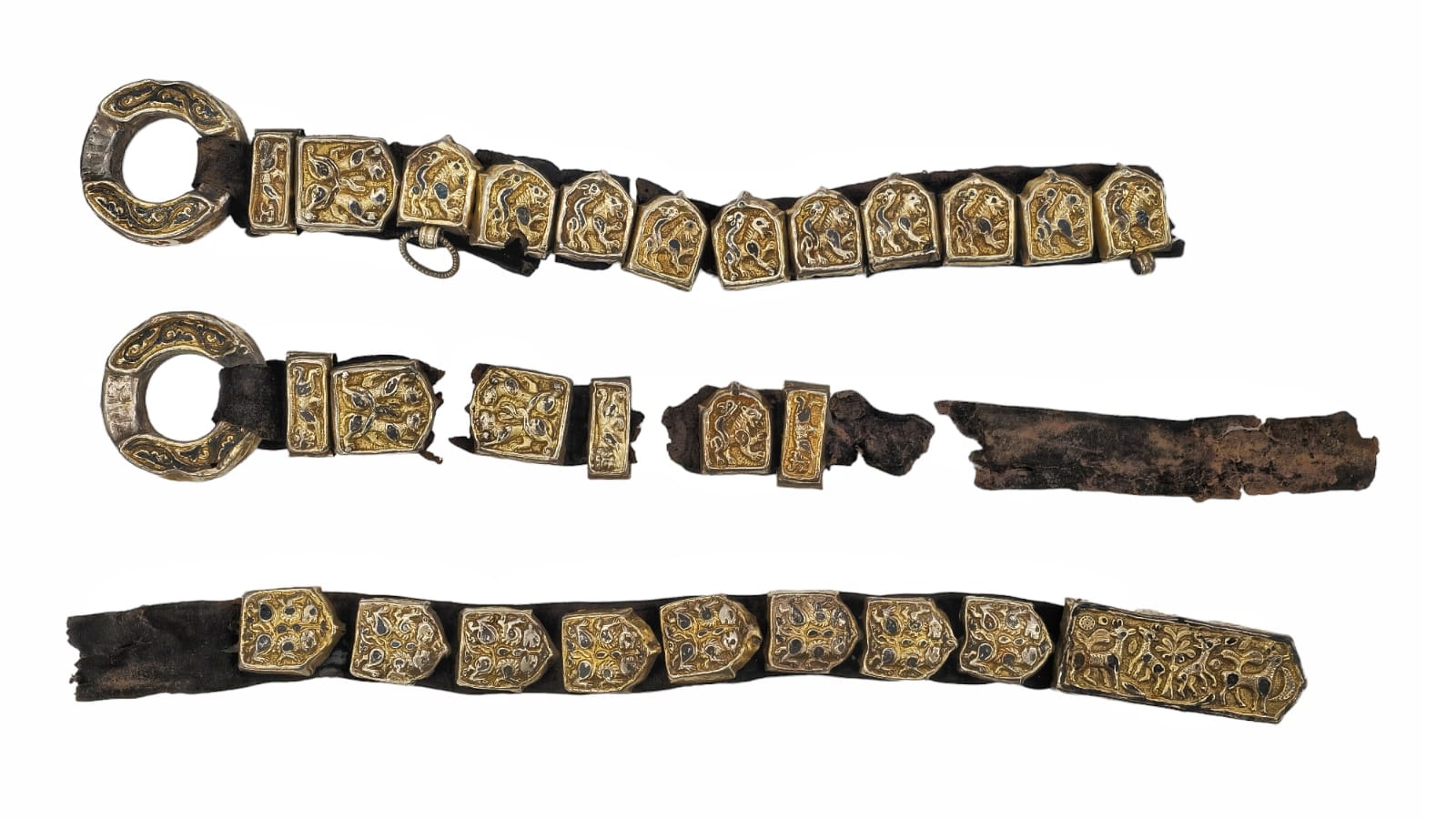 Seljuk belt with original leather and gilt silver parts, 12th-13th century. © Apollo Galleries
Seljuk belt with original leather and gilt silver parts, 12th-13th century. © Apollo Galleries
The best preserved item of leather Bonchev has ever seen was a piece of Norman armour with the original leather preserved from the inside and still attached to the metal plates. “I was asked to value it, and, in my opinion, it would go for over £500,000.” he says. It was carbon dated to the 10th century AD.
Before any item can legitimately go onto the market, Bonchev gets a statement from the seller and does numerous background checks including with Interpol.
Items such as leather belts with mounts and buckles intact are incredibly valuable. Bonchev is currently selling two – one, a 13th century example from Sweden, Norway or Denmark, and a Seljuk belt made by Turkic tribes who invaded southwestern Asia in the 11th century and covered in feline predators for around £100,000 each.
Illustrating the continuing allure of these items and how they chart human history to the present day, Bonchev says, “I usually deal with fashion boutiques. It’s really nice for them to have an ancient piece of leather to decorate and be displayed alongside new leather items.”
READ MORE

Breaking Through the Class Ceiling
What can a photographic exhibition at Southampton University teach us about social mobility? Students, staff and alumni share their experiences and contribute to a complex, intersectional picture of challenges.
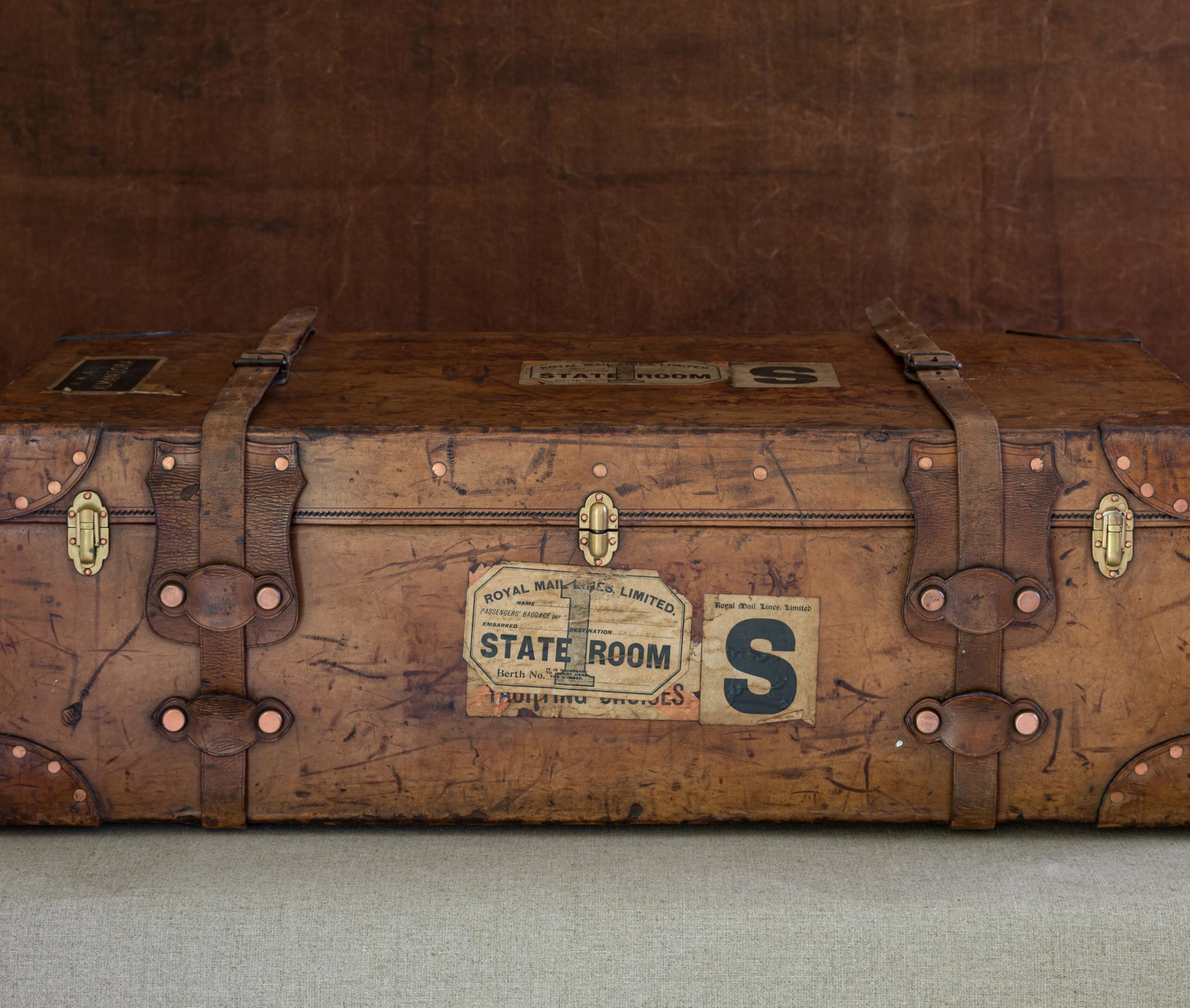
The Rich History of the Leather Trunk
Rory FH Smith charts the evolution of luggage and the role of leather - a story synonymous with changes in transportation.

Where the Oaks Grow
A timeless symbol of Britishness, the great English oak and its devoted army of coppicers are fundamental in producing some of the world’s finest tanned leather.